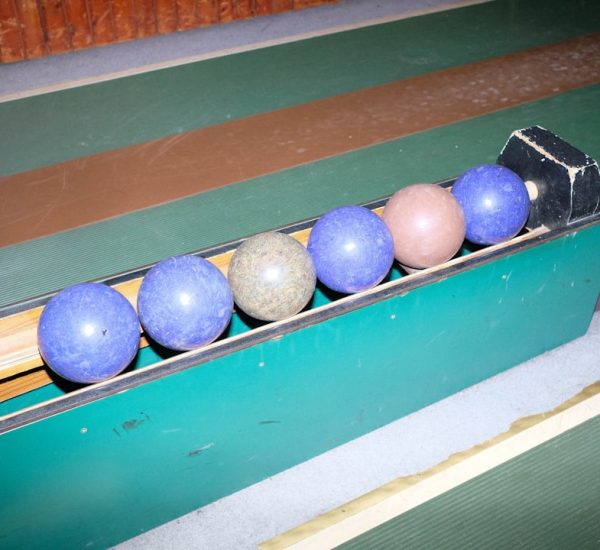Field hockey and lacrosse are two team sports that often get compared, especially in regions where both are popular, such as North America and parts of Europe. While they might look similar at times—especially with players running across a field using sticks—these two sports are fundamentally different in terms of rules, origins, gameplay, and equipment.
TL;DR — Summary
Field hockey and lacrosse may appear alike from a distance, but they are distinct in many key aspects. Field hockey uses a flat stick and a hard ball, and players must keep the stick low to the ground. Lacrosse involves a stick with a net-mounted head used to catch and throw a rubber ball and allows more physical contact. The sports also differ in pace, physicality, and protective gear requirements.
Origins and Historical Context
Field hockey has ancient roots, dating back to civilizations in Greece, Egypt, and Persia. The modern version of the sport was formalized in the 19th century in England and spread through British colonial influence. Lacrosse, on the other hand, originated as a Native American game and holds spiritual and cultural significance. It was later adopted and modified by European settlers in Canada.
Both sports are governed by international bodies today, with the International Hockey Federation (FIH) overseeing field hockey and World Lacrosse handling lacrosse regulations. Despite these parallels, their foundations are inherently different, contributing to the divergence in how they are played and perceived globally.
Equipment and Attire
One of the most obvious distinctions lies in the equipment used:
- Field Hockey: Players wield a flat stick, only curved on one side, and a small, hard plastic ball. Protective gear usually includes mouthguards, shin guards, and sometimes eye protection especially at higher levels.
- Lacrosse: Players use a stick with a mesh pocket at the top, designed to throw, catch, and hold a rubber ball. The protective gear is more extensive, including helmets, gloves, chest protectors, and arm guards, especially in men’s lacrosse.

The gear differences also hint at the nature of each sport—while lacrosse involves more physical contact like checking and body collisions, field hockey emphasizes speed, precision, and finesse.
Rules and Playing Surfaces
Another major distinction is in how the game is played.
- Field Hockey: Usually played on grass, turf, or astro turf. Each team has 11 players, including a goalkeeper. Players must use the flat side of the stick to control the ball, and high lifting of the ball is generally restricted to avoid injuries.
- Lacrosse: Played on a grass or artificial turf field as well, but with either 10 players (men’s field lacrosse) or 12 players (women’s field lacrosse) on each side. Unlike in field hockey, players carry, pass, and shoot the ball through the air using their netted sticks.
Field hockey games are typically lower scoring compared to lacrosse, where goals can happen rapidly and frequently. This is largely due to the different methods of ball handling and the amount of physical interference permitted in each game.
Game Strategies and Style
The gameplay of field hockey revolves around plays on the ground and intricate passing sequences, with heavy emphasis on stick skills and footwork. Offensive strategies center on maneuvering the ball into the striking circle for short passes and one-time shots on goal.
Lacrosse, conversely, includes both horizontal and vertical play, leveraging the 3D nature of the stick and field. It allows for aerial passes, dodging defenders, and aggressive offensive tactics such as cradling, shooting on the run, and crease rolls.

This leads to lacrosse being often described as a more dynamic and physically demanding game, especially in men’s leagues. Women’s lacrosse, while less physical, still involves rapid ball movement and sharp changes in pace and direction.
Physicality and Contact Rules
One of the starkest contrasts lies in player interaction. In field hockey:
- Player contact is limited.
- Stick-checking and body collisions are penalized.
- Health and safety regulations prevent excessive physical play.
In lacrosse, particularly in men’s versions:
- Controlled body checking is allowed.
- Stick-checking can be used to dislodge the ball or disrupt passes.
- Physical endurance and protection are critical parts of the game.
This makes the skillsets required for each sport fundamentally different, even if both involve running, spatial awareness, and stick-handling.
Cultural Popularity and Development
While both games have grown in popularity worldwide, they have different strongholds. Field hockey is more popular globally, especially in countries like India, the Netherlands, Australia, Germany, and Argentina. It is also an Olympic sport with longstanding international competitions.
Lacrosse’s international reach is growing, especially in the U.S. and Canada where it is integrated into school and college sports systems. It is also gaining momentum in Europe and Asia, and has recently been included in the program for the 2028 Olympics in Los Angeles.
Gender Differences in the Sports
It’s important to note that the rules and nature of the sport can vary by gender, particularly in lacrosse. Men’s lacrosse features full contact, while women’s lacrosse is less physical and has different stick and field regulations. Field hockey, on the other hand, retains similar rules across both men’s and women’s formats, although the playing styles may vary.
Conclusion
Although at a glance field hockey and lacrosse may seem comparable due to their use of sticks, field dynamics, and team structures, they are distinctly different sports. Each requires unique skillsets, caters to different physical demands, and is shaped by varying cultural and historical influences. Whether one prefers the ultra-fast pace and contact-heavy play of lacrosse or the tactile artistry and precision inherent in field hockey often depends on regional exposure and personal preference.
Frequently Asked Questions
- Is field hockey older than lacrosse?
Field hockey has ancient roots in various early civilizations, but lacrosse has a significant indigenous heritage in North America. Both are old in different cultural contexts. - Can someone switch between field hockey and lacrosse easily?
While some skills like spatial awareness and hand-eye coordination translate well, the sticks, rules, and physicality differ enough that switching would require practice and adjustment. - Which sport is more physically demanding?
Lacrosse, especially in men’s formats, is generally more physically demanding due to its allowance for body contact and faster pace. - What is the main reason people confuse the two sports?
The visual similarity of using sticks and running across a similar-sized field often leads to confusion, especially among those unfamiliar with either game. - Are both sports played worldwide?
Yes, but to different extents. Field hockey has a broader global presence, while lacrosse is rapidly growing in popularity, particularly in North America and Europe.



